Lauraine’s blog
9 December 2013

Oranges are one of my most favoured fruits. But they have to be great oranges, such as the delicious Kerikeri or Gisborne oranges that are juicy and sweet while they are in season. As they ripen during the winter months, I find a couple of oranges a day keep the flu and winter colds at bay!
Oranges are terrific to add to dishes both savoury and sweet. As in this beautiful dish, enjoyed by me when Hayden McMillan was cooking at Tribeca (before he found fame in San Francisco at the Waiheke Island Yacht Club) is garnished with caviar, herbs, lemon and most importantly, perfect orange segments. The orange lent a wonderful mixture of sweetness and acidity to the fresh slices of delicious Ora King Salmon. It was superb.
When making orange segments it is essential to peel all away every single scrap of both skin and pith with a sharp knife. I find the best way to do this is to hold the orange very lightly in my left hand, and cut with a sawing motion around and around the orange. I end up with a lengthy piece of orange peel and as I go round I can catch any small pieces of white pith so the segments end up sparkling clear, just like those that Hayden produced in his dish here.
These segments are also brilliant in salads, desserts and for topping fish and chicken dishes.
8 December 2013
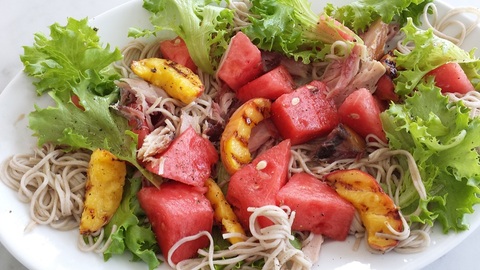
Italian, Chinese and Japanese cuisines are possibly the most recognised for ways with noodles. What would Italian fare be without spaghetti and the myriad other derivatives of both dried and fresh pasta noodles? Chinese egg and rice noodles are one of life's pleasures too. (Suffice to say I am not going to write about 'instant' noodles, despite their universal popularity. Yuk!)
But for me it is the array of noodles in Japanese eating that is supreme. You haven't tried Japanese food until you have experienced really good ramen, and for many Japanese a bowl of warming noodles in a light tasty broth makes the perfect lunch. Whether it is rice, buckwheat, udon or egg noodles they are essential to everyday eating in Japan.
I once stayed at Ryokan Sakamoto on the Noto peninsular which juts out into the Japan sea, well north of Tokyo. It was one of those life changing experiences with sensational food and exquisite style. While we were there the first harvest of the season's buckwheat arrived and it was inspiring to see the reverence with which Sakamoto san treated his heavy sackful of tiny seeds. He was, and still is, a master of soba noodle making and I cannot ever hear or read the word soba without thinking of this extraordinarily gifted but humble man.
My lunch salad today, pictured above is a intriguing combination of salted watermelon, smoked mackerel, grilled peaches, crisp lettuce and of course, cold soba noodles. It was delicious.
7 December 2013

Mustard is one of those essential storecupboard/fridge ingredients that cooks like me rely on to add an extra shot of flavour and to lift the taste in a variety of dishes. Right now, with Christmas looming, I am stocking up on mustard as it is the perfect accompaniment to the season's festive ham. I'm a real fan of Dijon mustard as it is smooth, only a little peppery and has a true mustard taste.
When in Paris recently we found a little gourmet store, Le Tomat tucked into a courtyard at 12, rue Jacob in the 7eme. It was filled with all sorts of those hard to find artisan food products that have been carefully collected and displayed. I bought a tiny selection to bring home in my luggage and my first choice was a small jar of green tarragon mustard. It is deliciously perfumed with tarragon and is going to be perfect to add to vinaigrettes over the summer months.
Needless to sat, it lurks well to the back of the shelf in the fridge as I am jealously guarding the jar and only bringing it out when I know it's going to be appreciated.
6 December 2013
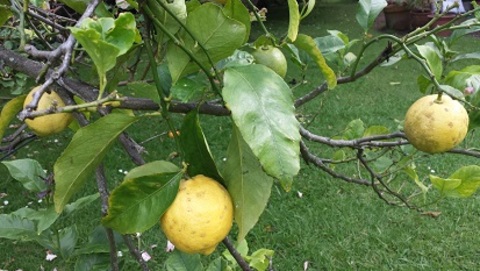
In the list of questions journalists ask a foodie it is guaranteed that somewhere
"What are your favourite ingredients?" will pop up. My answer always begins with lemons (then salt, herbs and butter in that order) and I defy any foodlover to even begin to imagine life without lemons.
Lemons bring freshness, a drop of acidity and a tantalising perfume to every dish they are added to. A golden rule however is to make sure you add the lemon juice at the very end of the preparation of your cooking, just before serving, as the freshness will dull over time and that jolt of sparkling flavour will be lost.
I have a lemon tree in my garden that was here when we moved in 38 years ago. It has been a magnificent friend over all those years, reliably producing a crop of juicy tart lemons year round. It has suffered from borer, had its limbs pruned and twisted and is now only a shadow of its former self, gnarled and curled like a very old woman. But I prop it up and it keeps on rewarding me. I love that tree with all my heart.
5 December 2013
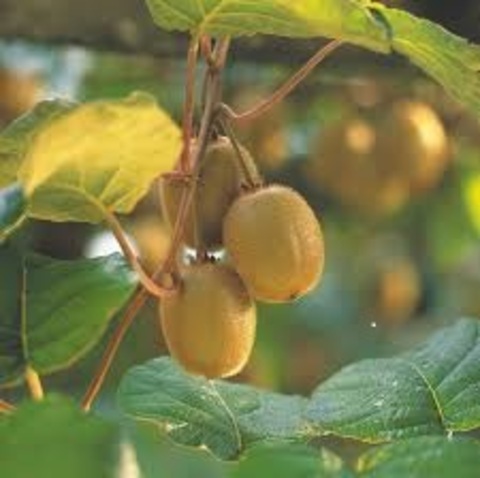
I grew up in a home that had a field of kiwifruit vines on the boundary. We would sneak over the stone walls to help ourselves to a feast of 'Chinese Gooseberries' as they were named at that time. The old ladies who lived next door were more than happy as they had little use for them.
A few years later a smart marketer renamed these furry fruit 'Kiwifruit', exported them around the world and made them one of the stories of riches upon which we built the nation.
As we call ourselves Kiwis we're often the butt of jokes, but there's no denying that a Kiwifruit in prime condition is a thing of beauty. Cut in half it reveals its inner secret - a delicate web of black seeds arranged in concentric circles. Ideal for topping a pavlova or for adding a splash of green to a fresh fruit salad. Even better, just peel and enjoy; the sweetness and acidity are in perfect balance.
4 December 2013

It suddenly sneaks up every year. The orchard and stores are filled with juicy ripe berries, quickly followed by stone fruit. Even though this is a particularly busy time a surfeit of fruit means jam making.
I cannot decide if my favourite jam is raspberry or Doris plum. Both have that little touch of tartness that makes for perfect jam. Strawberry jam comes a close third and even my 90 year old mother has already made a couple of batches with this season's pickings.
In the pic above the deliciously flavoured jam Zambia Neely made for her entry in the Whangaripo Wild Food and Forage Festival was mulberry. The perfect jam to go to her wild fennel scones with cream and jam. I loved the combination so much Zambia is coming to our next Listener photo shoot to share her recipe with the world. A budding food writer or chef? Great to see kids who are enthusiastic about getting into the kitchen..
3 December 2013
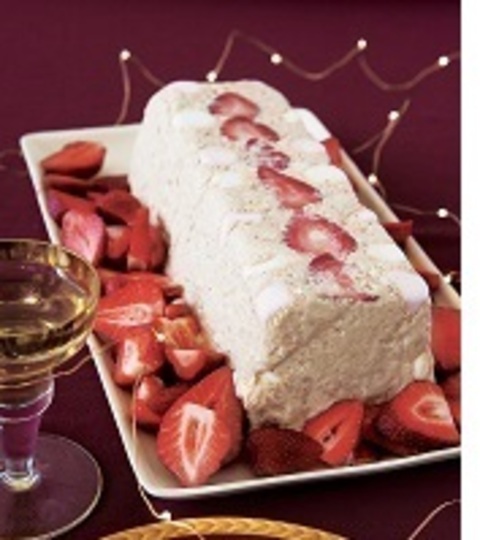
Over the weekend I discovered NICE ice blocks and ice cream. Where the hell have you been you might ask? Precisely. Absolutely superb they are too. Especially the chocolate ice block made with Real Samoan Coconut Cream. Needless to say there are a stack of them now in my freezer.
Also a fan of parfait, I have made a humdinger dessert for the Christmas feature for my Listener Food column, out next week. Made with fresh strawberries, eggs, sugar and cream (Lewis Road Jersey Cream of course) the Strawberry Parfait with Marshmallows is an ideal treat for the family at Christmas, especially as the kiddies will love those pink and white marshmallows I have added. ( You will have to wait for the recipe.)
The big thing about frozen parfaits as opposed to ice creams is that you do not need an ice cream machine to churn the mixture. It is soft and creamy at freezing point and therefore there are not a ton of ice crystals that form. On the other hand it is imperative you do something about cooking all those raw eggs. This is achieved by heating sugar syrup and adding to very hot to the fluffy beaten eggs. My advice is only make the parfait 2-3 days out from eating it and do not keep it for any length of time, even if it is in the freezer. Enjoy!
2 December 2013

As a food stylist (I fashion all the food for my Listener columns and the photos are set up with the help of the very talented stylist Kate Arbuthnot) I am always trying to think of ways to make my food look more and more deliciously attractive.
Sometimes I want it to look very pretty and that's when I find flowers to decorate for a gorgeous finishing touch. But they must be edible!
My favourites are brightly coloured nasturtium flowers when I want vivid notes on the plate, borage flowers or thyme flowers when something more subtle is called for, and for prettying up a cake or a special dessert there's always the wonderfully delicate heartsease flowers like those in the pic.
Heartsease are from the viola family and are full of antioxidants, so there's nothing quite like a little bit of window dressing that is good for you!
1 December 2013
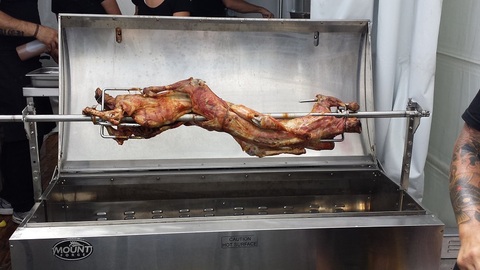
Goat is probably one of the most uncommonly cooked meats in New Zealand but is also uncommonly good. Most of us have got closest to the goat by eating goat cheese, especially feta which can be soft, fresh and crumbly.
When I attended the recent taste of Auckland I was gobsmacked to see the goat pictured above on a rotisserie spit, golden and crisp from several hours of roasting. Ben Bayly of Baduzzi, the brilliant American/Italian newcomer restaurant in the base of the new ASB building at North Wharf made this goat into the most delicious muffaletta sandwiches.
Taste is the best food event on the Auckland calendar for not only can you taste and purchase fabulous artisan food products, but you can also wander around sipping and sampling food from many of the city's best restaurants. It is the one chance to experience great food at absolutely bargain prices. And it's all in a very sophisticated scene with no greedy grabbing and shovelling that can happen at other events. Yay.
I'm really keen to cook some goat myself now and will be chasing some in the next week or two. Wairau Wild Game have it to order so a whole goat may well be on the menu if you're invited to my place soon. In the meantime there will be plenty of both local and imported goat cheese in my fridge.
30 November 2013

Forage is the new black of the food world. Leading chefs around the planet were the first to alert us to the possibilities of finding food in the wild. They put all sorts of weird and wonderful things both familiar and unfamiliar on their menus.
So it was with great delight I accepted an invitation last week to judge the inaugural Whangaripo Valley Wild Food & Forage Festival. It was astonishing just what the locals, who came from the valleys and hills behind Matakana and Pakiri, found to make dishes for the competition.
There were few rules; just turn up with plates of your most wild imaginative food for tasting, put your fears aside and have fun. The official festival kicked off in the Whangaripo Valley Hall where tables were set up for the displays while outside families relaxed in the shade of marquees, listening to an all girl band, watching over the kids’ organized fun competitions and sipping local Leigh Sawmill beers and Lothlorien wines. Buffalo burgers and goat sausages were served from smoky barbecues.
As the official judge I ate my way through all manner of astonishingly tasty treats, and now know there’s plenty of food talent in them thar hills! Pukeko, peacock, wild rabbit, eel, wild boar, wild deer, freshly caught fish and more were fashioned into pies, sausages, pates and salamis. Wild plants from fennel, nasturtiums, berries, honeysuckle, wild roses and samphire found their way into some fantastic treats.
The winners included honeysuckle sorbet in a honeysuckle ice bowl, seedy oat crackers with pickled beetroot, smoked eel and nasturtium salsa, wild fennel scones with mulberry jam and cream, wild boar balls(!) and nasturtium ice cream on seedy shortbread. I wish I could have awarded more prizes as every single item was so imaginative.
Well done to the clever organizers and roll on 2014.








